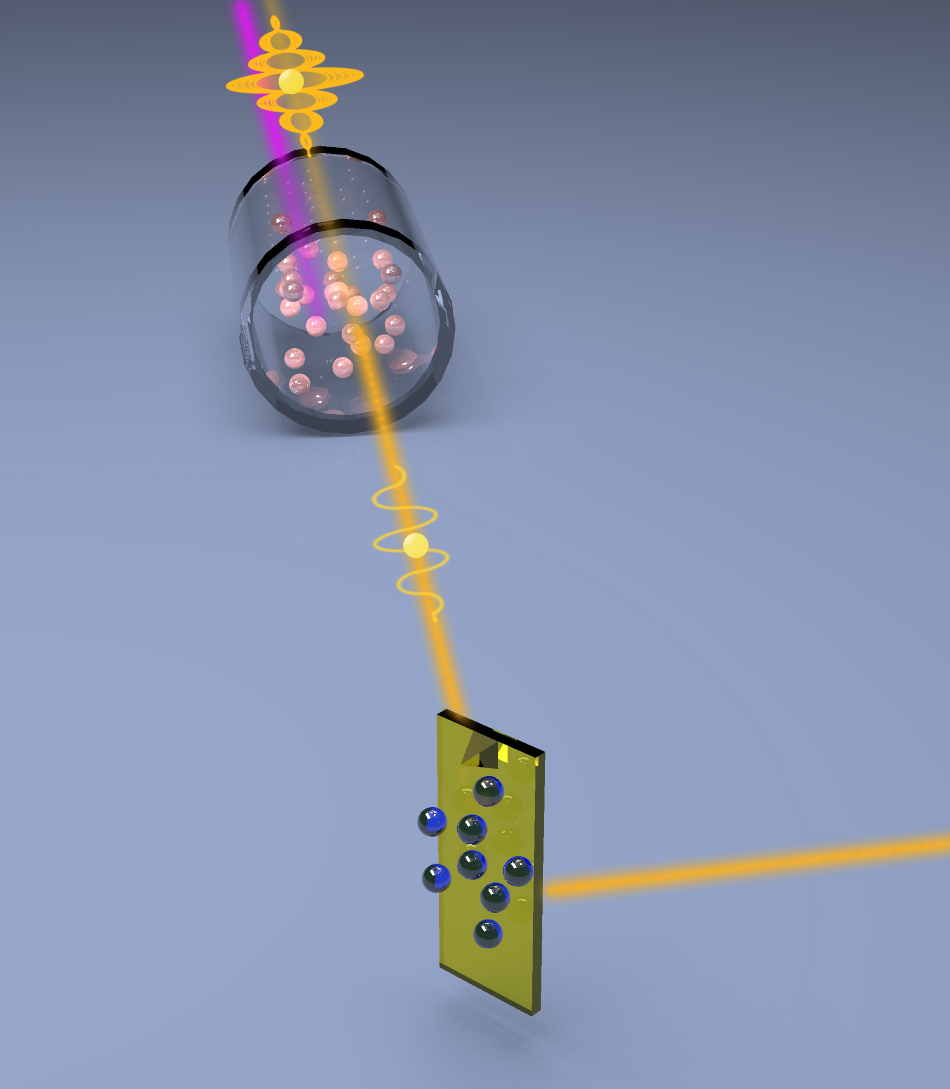Sep 9 2020
At the Oak Ridge National Laboratory of the U.S. Department of Energy, researchers advanced sophisticated microscopy and paved the way to finding material properties with improved sensitivity than what can be realized with conventional tools. They achieved this by using quantum optics.
 ORNL researchers developed a quantum, or squeezed, light approach for atomic force microscopy that enables measurement of signals otherwise buried by noise. Image Credit: Raphael Pooser/ORNL, U.S. Department of Energy.
ORNL researchers developed a quantum, or squeezed, light approach for atomic force microscopy that enables measurement of signals otherwise buried by noise. Image Credit: Raphael Pooser/ORNL, U.S. Department of Energy.
We showed how to use squeezed light—a workhorse of quantum information science—as a practical resource for microscopy. We measured the displacement of an atomic force microscope microcantilever with sensitivity better than the standard quantum limit.
Ben Lawrie, Materials Science and Technology Division, ORNL
Lawrie headed the study with Raphael Pooser from ORNL’s Computational Sciences and Engineering Division.
In contrast to existing classical microscopes, the quantum microscope developed by Pooser and Lawrie needs quantum theory to describe its sensitivity. ORNL’s microscope includes nonlinear amplifiers that produce a unique quantum light source called squeezed light.
“Imagine a blurry picture,” noted Pooser. “It’s noisy and some fine details are hidden. Classical, noisy light prevents you from seeing those details. A ‘squeezed’ version is less blurry and reveals fine details that we couldn’t see before because of the noise.” He further said, “We can use a squeezed light source instead of a laser to reduce the noise in our sensor readout.”
An atomic force microscope’s microcantilever is a tiny diving board that systematically scans a sample and bends upon sensing physical changes.
In collaboration with student interns Nick Savino, Emma Batson, Jeff Garcia, and Jacob Beckey, Lawrie and Pooser demonstrated that the quantum microscope invented by them could quantify a microcantilever’s displacement with 50% improved sensitivity compared to what is classically feasible. For measurements that last for 1 second, the quantum-enhanced sensitivity was found to be 1.7 fm, which is nearly twice the diameter of a carbon nucleus.
Squeezed light sources have been used to provide quantum-enhanced sensitivity for the detection of gravitational waves generated by black hole mergers. Our work is helping to translate these quantum sensors from the cosmological scale to the nanoscale.
Raphael Pooser, Computational Sciences and Engineering Division, ORNL
Their approach to quantum microscopy is based on controlling the light waves. The merging of waves enables them to interfere constructively, which implies that the amplitudes of peaks sum up to make the ensuing wave bigger.
Or, they also tend to interfere destructively, which implies that trough amplitudes subtract from peak amplitudes to render the ensuing wave smaller. This effect can be observed in waves occurring in a pond or an electromagnetic wave of light, such as a laser.
Interferometers split and then mix two light beams to measure small changes in phase that affect the interference of the two beams when they are recombined. We employed nonlinear interferometers, which use nonlinear optical amplifiers to do the splitting and mixing to achieve classically inaccessible sensitivity.
Ben Lawrie, Materials Science and Technology Division, ORNL
Reported in Physical Review Letters, this interdisciplinary study is the first practical use of nonlinear interferometry.
The Heisenberg uncertainty principle—a familiar aspect of quantum mechanics—renders it inconceivable to describe both the position and momentum of a particle with absolute certainty. There exists a similar uncertainty relationship for the phase and amplitude of light.
This aspect poses a problem for sensors based on classical light sources such as lasers: The highest sensitivity that can be achieved by these sensors reduces the Heisenberg uncertainty relationship with equal uncertainty in each variable.
Although squeezed light sources minimize the uncertainty in one variable, they increase the uncertainty in the other variable. Therefore, they tend to “squeeze” the uncertainty distribution and scientists have applied squeezing to analyze both small and great phenomena.
In such quantum sensors, the sensitivity is usually limited by optical losses. “Squeezed states are fragile quantum states,” noted Pooser. “In this experiment, we were able to circumvent the problem by exploiting properties of entanglement.”
Entanglement refers to the behavior of independent objects as one. Einstein named it “spooky action at a distance.” Here, the intensities of the light beams correspond with each other at the quantum level.
“Because of entanglement, if we measure the power of one beam of light, it would allow us to predict the power of the other one without measuring it,” he added. “Because of entanglement, these measurements are less noisy, and that provides us with a higher signal to noise ratio.”
ORNL’s approach to quantum microscopy is widely applicable to any improved sensor that generally uses lasers for signal readout. “For instance, conventional interferometers could be replaced by nonlinear interferometry to achieve quantum-enhanced sensitivity for biochemical sensing, dark matter detection or the characterization of magnetic properties of materials,” concluded Lawrie.
This study was financially supported by the DOE Office of Science and ORNL’s Laboratory Directed Research and Development Program.
Journal Reference:
Pooser, R. C., et al. (2020) Truncated Nonlinear Interferometry for Quantum-Enhanced Atomic Force Microscopy. Physical Review Letters. doi.org/10.1103/PhysRevLett.124.230504.